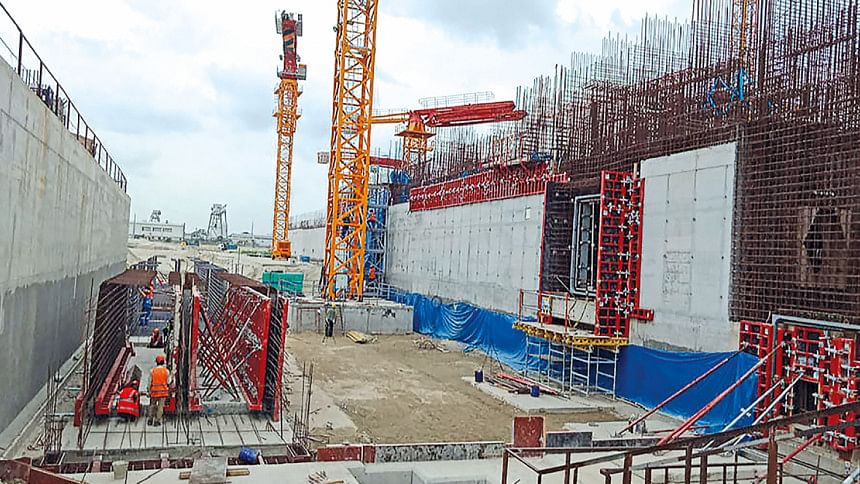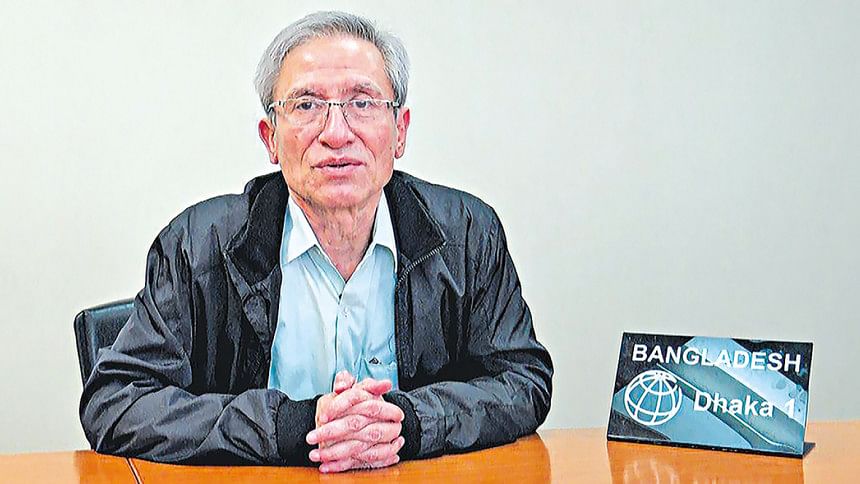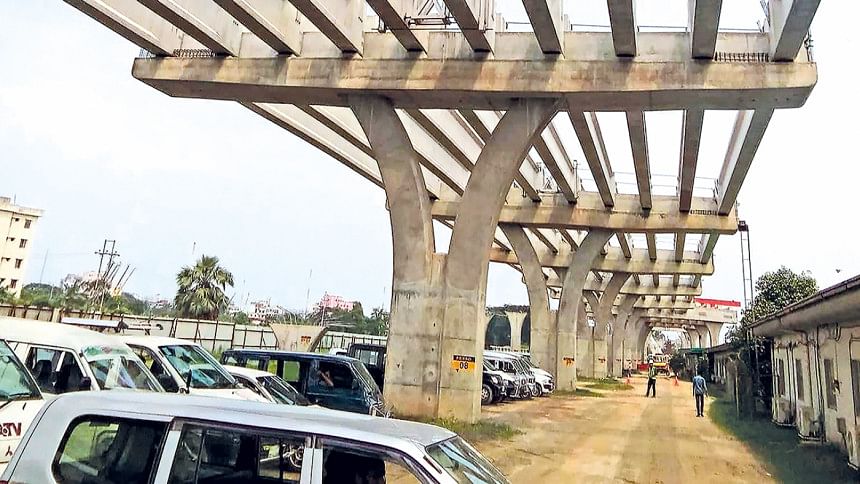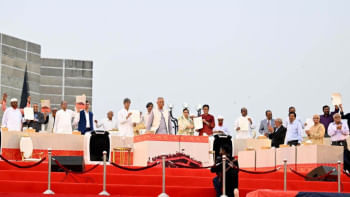“Project management capacity needs considerable enhancement”

The government is implementing several fast-track projects. Would you please elaborate the possible impact of the projects on our economy?
The impact of mega investment projects depends on the extent to which they address some major infrastructure or energy gaps in the economy and the efficiency, measured in terms of time and cost, with which the implementation of the projects is completed. Thus, the benefits and costs of the projects assessed at the time of project preparation can change significantly depending on the implementation efficiency.

Among the mega projects now being implemented, the most promising ones are the Padma Bridge and the Dhaka Metro Rail. Notwithstanding time and cost overruns witnessed already, these projects still have fairly decent benefit-cost ratios in the order of 1.5 to 2. The Padma Bridge is expected to facilitate greater integration of regional markets within the Bangladeshi economy. Traffic congestion in Dhaka already causes significant delays. This in turn has an impact on productivity, quality of life and the overall economy, not to mention the environmental and health consequences caused by CO2 emissions. The Dhaka Metro project will contribute to faster, more reliable and environment-friendly transportation to all urban commuters. Besides, the 3.4-kilometre-long, 10-metre-wide tunnel under the river Karnaphuli in Chattogram, including approximately six kilometres of connecting roads, will improve the Dhaka-Chattogram-Cox’s Bazar highway network and connect to the Asian Highway Network. If the Payra port becomes fully operational in 2023, it may help boost regional trade and tourism because its located in a regional and international shipping-friendly place. However, the realisation of the potential benefits from Payra port will depend critically on the resolution of technical issues without which large ships will not be able to anchor.
Meeting our increasing demand for energy is a major challenge that can only be addressed by diversifying the use of primary fuel. The already completed Maheshkhali Floating Terminal is an integral component of ensuring continued energy supply in future, given that our own natural gas reserves are depleting fast. Prices of oil, coal, and fossil fuels around the world have been volatile, making their availability at an affordable price a challenge. Bangladesh presently meets the energy requirements predominantly through natural gas, supplemented by coal and furnace oil plants.
Nuclear power comes into consideration as a strategic option for Bangladesh’s future energy development provided certain prerequisites are met. These pertain to safeguarding the health and security of nuclear reactors, the proper management of nuclear waste treatment, the security concerns over the safe usage of nuclear materials and nuclear waste disposal. Bangladesh has good prospects of finding offshore natural gas reserves. Power generation through oil and coal has also advanced visibly. Such energy production from fossil fuels is cheap, involving small initial investments and relatively short construction periods. In contrast, investment requirements in nuclear energy are high with long gestation period and huge downside risks. Availability of uranium resources is also a challenge. Therefore, nuclear power projects do not appear as efficient when compared with alternative sources of power generation. The government can take some lessons from countries such as the US, Germany, France, South Korea, China and Japan to efficiently manage the nuclear power operations.
The Rampal Power Plant is designed to have a capacity of 1,320 MW to help meet the fast-growing demand for power in Bangladesh. Various environmental and civil society groups have voiced concerns about the location, energy source, size, potential risk to humans and to the biosystem that the project poses. Although the government has assured us that the coal-based project will be constructed using modern technology, activists argue that the plant being located so close to the Sundarbans will damage the natural habitat of plant and animal species. The government must ensure compliance with its promises of importing high-quality coal, building sufficiently high chimneys, employing state-of-the art technology and taking other necessary steps to avert any adverse impact on the Sundarbans.
Do you think the fast-track projects are progressing smoothly?
Almost all of them are facing delays for a variety of reasons, some logical and others not so logical. Unforeseen events such as the Holey Artisan tragedy and design complications are the logical ones while poor planning and non-transparent selection of contractors are hard to justify. Physical progress is now visible in case of the Padma Bridge and the Dhaka MRT. The cost estimates have been revised upwards several times. Time and cost overruns are not unusual in such large and complex projects. However, Bangladesh’s record on these fronts leaves a lot to be desired even in cases of smaller and simpler projects. It is refreshing to see the completion of the LNG terminal in Maheshkhali. Now serious attention must be paid to its operation and maintenance.
Most of the projects are failing to maintain deadlines. What do you think are the reasons for this?
The reasons range from poor initial design, land acquisition and procurement delays, complicated fund release procedures to ineffective supervision on the part of the implementing agencies due to red tape as well as “rent-seeking” pressures from various powerful quarters. Budgetary allocations for these projects often remain unutilised because of these bottlenecks. The government’s capacity to undertake proper project design and selection, implementation and evaluation is limited. The efficiency of implementation is also constrained by fragmented institutional arrangements, as well as the regulatory framework, which has adversely affected progress in Dhaka MRT in particular. The institutional landscape for urban management consists of a large number of stakeholders with limited coordination, including of associated reforms. Concerns about environmental risk, safety standards and waste management have justifiably slowed implementation progress of the Rooppur and Rampal power projects. Doing them right rather than just doing them fast is most critical.

What steps should the government take to complete these projects?
There is a need for prioritisation even within the exiting list of priority mega projects. Padma Bridge and Dhaka MRT are obvious high priorities. They have already come a long way, but there are still miles to go before reaching the finishing line. Meanwhile, projects like Dhaka MRT are causing a lot of inconveniences to the city dwellers. Its expeditious completion therefore has to be a high priority. The government needs to ensure that implementation is not help up due to delays in decision-making on its part or due to inadequate budgetary allocation and payment-related complications. The implementation agencies have signed Annual Performance Agreements (APAs) where completion of these projects should be made the key performance criteria. Both the implementation agencies and the project contractors should be held accountable based on clearly specified performance indicators. We must also keep in mind that these are not the be all and end all of the projects. Bangladesh’s infrastructure and energy needs can only be expected to rise as it moves towards becoming a middle-income country. To handle these challenges, the government’s project management capacity needs considerable enhancement in order to be able to handle the contractual aspects, assess the financing needs and negotiate financial and technical deals. Increasing the scale, quality and efficiency of public investment will be important for Bangladesh in order to achieve the sustained economic growth required to become a high-income country by 2041.

 For all latest news, follow The Daily Star's Google News channel.
For all latest news, follow The Daily Star's Google News channel. 



Comments